Tidal Exchange



Faced with this predicament, the Tidal Wetland Program (TWP)—a collaborative effort of the California Department of Fish and Wildlife and the Elkhorn Slough Foundation—convened more than 100 scientists and resource managers to focus on understanding and restoring the tidal marshes of Elkhorn Slough. After evaluating a wide range of alternatives, it was agreed that the Elkhorn Slough estuary required more sediment to sustain healthy tidal marshes, especially in the face of sea level rise. newsletter of the elkhorn slough foundation


Restoring Healthy Tidal Marsh
It’s a sad reality that approximately 90% of California’s wetlands have vanished, largely as the result of diking and draining. Nearly half—about 1,000 acres—of Elkhorn Slough’s historic tidal marshes have been lost since 1870, reducing both wildlife habitat and water filtration. (A football field, minus the end zones, is just about an acre. Imagine 1,000 football fields to visualize the scale of this loss.)
From the late-1800s through the mid-1900s, parts of Elkhorn Slough, especially marshes along the slough’s southern and eastern shores, were diked and drained to create pasture and farmland. The land in these former marshes began to subside after it was drained. The once moist and peaty soils dried out and compacted—much like a kitchen sponge shrinks as it dries—and dropped from one to six feet below historic elevations.
When the dikes broke or were removed in later years, the drop in elevation meant the marshlands, which before were submerged only intermittently by higher high tides, now are flooded too consistently to support pickleweed and other marsh vegetation.
The result: land too high for productive mudflat but too low for tidal salt marsh.
In unaltered estuaries, sediment is deposited naturally to wetlands by the outflow of creeks and rivers. Pickleweed can colonize these deposits, trapping
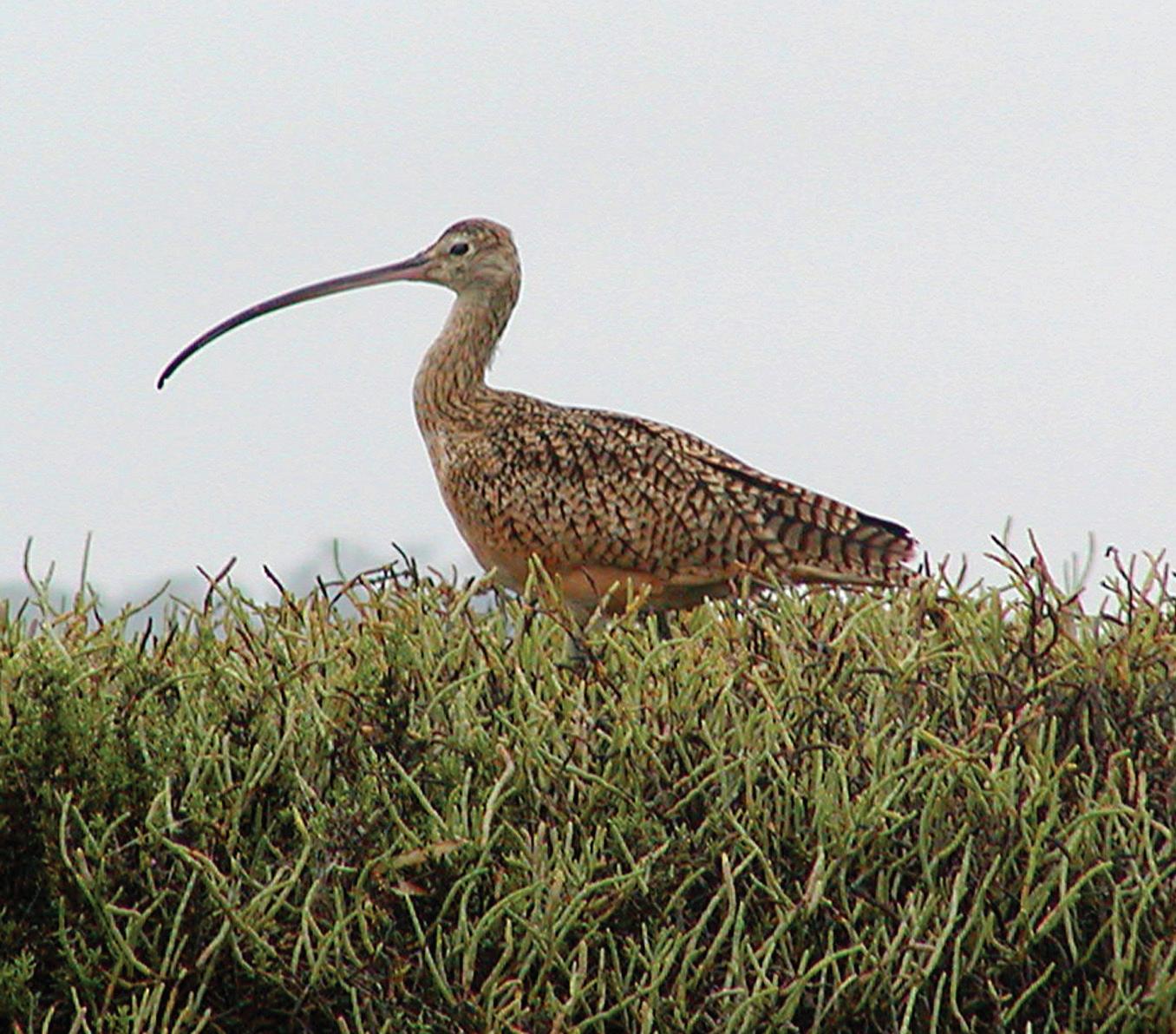
more sediment, which in turn promotes the growth of additional pickleweed. The hydrology (movement of water) of Elkhorn Slough has been dramatically altered over the years—both naturally and by humans— resulting in changes to sediment influx. For example, freshwater sources such as Carneros Creek, Pajaro River, and the Salinas River provide much less sediment than they did historically.
Elkhorn Slough Foundation
Steve Webster
President
Steve Dennis
Vice President
C. Michael Pinto
Treasurer
Judith Connor
Secretary
Ed Boutonnet
Terry Eckhardt
Steve Green
Robert Hartmann
Kent Marshall
Anne Olsen
Anne Secker
Lydia Villarreal
Tom Williams
Mary Wright
Mark Silberstein
Executive Director
The mission of the Elkhorn Slough Foundation is to conserve and restore Elkhorn Slough and its watershed.
We see Elkhorn Slough and its watershed protected forever— a working landscape, where people, farming, industry, and nature thrive together. As one of California’s last great coastal wetlands, Elkhorn Slough will remain a wellspring of life and a source of inspiration for generations to come
PO Box 267, Moss Landing California 95039
tel: (831) 728-5939 fax: (831) 728-7031 www.elkhornslough.org
i
John Warriner, one of the Founding Directors of the Elkhorn Slough Foundation, passed away on July 27, 2013. His commitment to the conservation of the slough is a legacy that benefits all of us.

In addition to starting the Elkhorn Slough Foundation and serving on the board for 25 years, John served on the Elkhorn Slough National Estuarine Research Reserve Advisory Committee for 30 years. As a representative of The Nature Conservancy on the Reserve Advisory Committee, he was instrumental in the acquisition of the Salt Ponds for the Moss Landing Wildlife Area.
John and his wife, Ricky, pioneered the study of snowy plovers in the Monterey Bay area and, working with the Point Reyes Bird Observatory, were responsible for a series of key publications on the biology and ecology of this endangered species. They motivated significant conservation for this species as well as for habitats supporting a diversity of species. Along with Bob Ramer, John started the annual Audubon bird count centered on Moss Landing and the slough, which is now one of the country’s top 10 counts for the number of species sighted.
John worked quietly and never sought recognition for the contributions he made to support conservation around the bay. He was dedicated to the conservation of the slough. He will be missed by all of us who had the good fortune to work with and know him.
We send our deepest sympathies to his wife Ricky, two daughters, grandchildren and great grandchild. His legacy continues in the conservation of nearly 6,000 acres protected by the Reserve, the Foundation, and The Nature Conservancy. n

When was the last time you visited us online? Visit our website at www.elkhornslough.org for in-depth information and event listings. While you’re there, sign up to receive our monthly e-newsletter, Slough Buzz, for updates on happenings on and around Elkhorn Slough. Interested in birds and wildlife? Visit the Sightings blog at sightings.elkhornslough.org for listings of critters recently spotted at the Reserve. Check out Dave On the Trail at manager.elkhornslough.org, where Reserve Manager Dave Feliz shares his insights and observations about the slough’s natural history. And, of course, like us on Facebook and follow us on Twitter for news flashes, facts, and fun! n
Caring for nearly 4,000 acres of rare habitat involves a wide range of responsibilities. For the Elkhorn Slough Foundation, much of this revolves around native plants. Whether we’re raising native grasses to harvest seed, restoring historic stands of oak woodland, or removing non-native invasive plants, we respect the interconnectedness of the land and the plants that grow here.
We also recognize that for generations this watershed has been a working landscape with rich, fertile land for agriculture, as well as for native wildflowers. The farmers on ESF land practice sustainable, organic agriculture—preventing pesticides and fertilizers from running off into the waters of the slough. We also use natural agricultural practices to promote the growth of native grasses and flowers.


Case in point: the endangered Santa Cruz tarplant (Holocarpha macradenia)—a charming native annual in the sunflower family, sporting vivid yellow flowers. Santa Cruz tarplant is found only in Santa Cruz and Monterey Counties and occurs in only ten known populations, including one in the coastal prairie habitat on ESF’s 330-acre Porter Ranch property.
Through long-term monitoring and comparisons with other populations, ESF Stewardship Director Kim Hayes observed that a thick layer of thatch was limiting the Santa Cruz tarplant population’s ability to expand. Knowing that managed grazing had helped similar coastal prairie wildflower populations recover, Kim implemented a stewardship plan integrating the working landscape of Porter Ranch—a property that has been grazed continuously since the Spanish land grants—and the goal of restoring this endangered plant species.
Each year, cattle are brought into the pasture after the tarplant completely goes to seed. Last year, a further step was taken by spreading alfalfa hay over the area. Quick to spot a tasty treat, the cattle trotted over and began grazing. In addition to clearing away the thatch, the cattle worked the soil with their hooves, scratching seed hulls and encouraging germination.
“We couldn’t be happier with the results,” says Kim. “In a year when other populations are shrinking, the Santa Cruz tarplant population at Porter Ranch is on the increase.”
Our success with managed grazing at Porter Ranch is just one example of ESF’s long-held conviction that land conservation and working landscapes are a natural pair, helping each other thrive. n
To implement this recommendation, the Tidal Marsh Restoration Project was established as one of the primary initiatives of TWP and the hope is to restore more than 100 acres of tidal salt marsh throughout the Elkhorn Slough Reserve. The first step, currently underway, is to restore 18–36 acres (again, think 18–36 football fields) between Moonglow Dairy and the Union Pacific Railroad tracks.
“But for the plan to work,” says Tidal Wetland Program Director Monique Fountain, “we need dirt— and lots of it.”
And that’s where good luck, good timing, good planning, and good neighbors have come together in our favor. Just north of us, soils are being excavated as part of a local flood control project along the Pajaro River. This sediment—otherwise destined to take up valuable landfill space—is perfect to help build healthy tidal marsh.
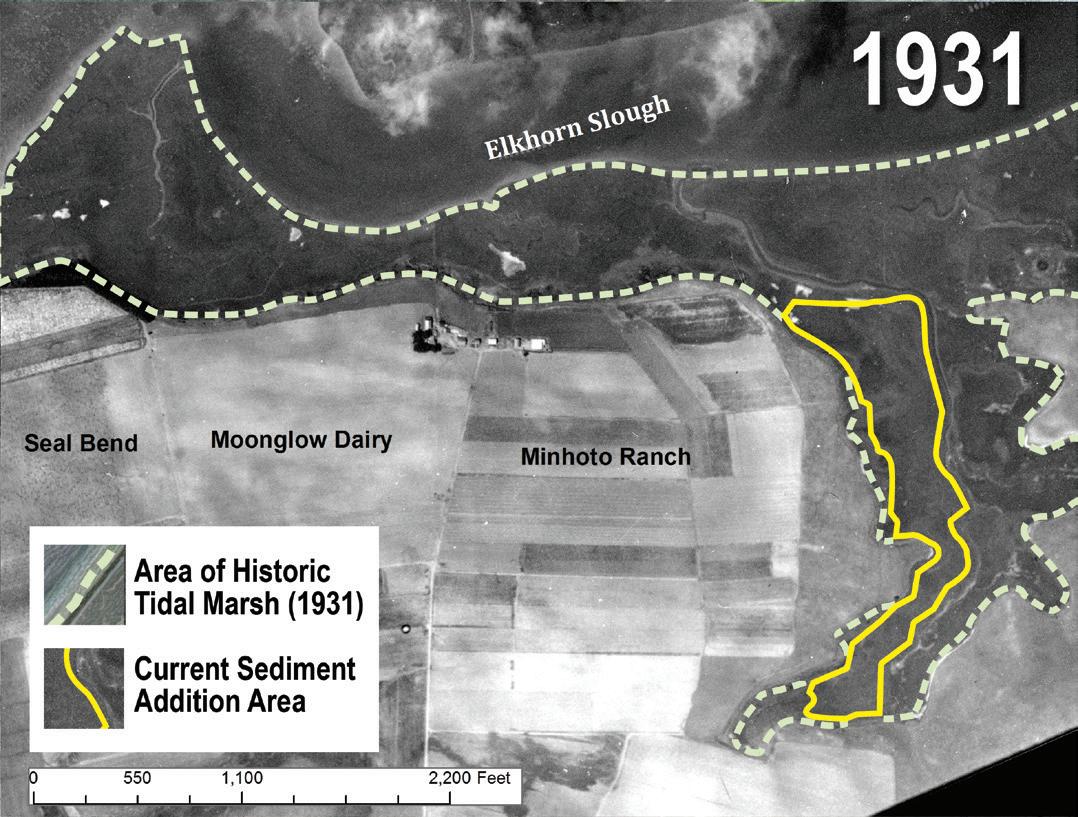

Of course, we are extremely particular about our dirt. To ensure the Pajaro River soil is right for the slough, it has been thoroughly tested for metals, pesticides, and other contaminants. And to minimize the risk of introducing seeds of invasive non-native plants, the top six inches of the Pajaro River soil will be sent to the landfill although most nonnative invasive plants that grow in the Pajaro River Valley, such as perennial pepperweed and yellow star thistle, don’t tolerate salinity well. As an added precaution, weeds have been spot-treated on site at the Pajaro River Flood Control Project, and the soil will continue to be monitored while it rests prior to being placed in the slough.
Diking and draining has significantly altered areas of historic tidal marsh, causing subsidence and habitat loss. (Compare the areas outlined in dotted green above.) TWP is restoring 18–36 acres of tidal marsh within the current project area, shown in yellow.

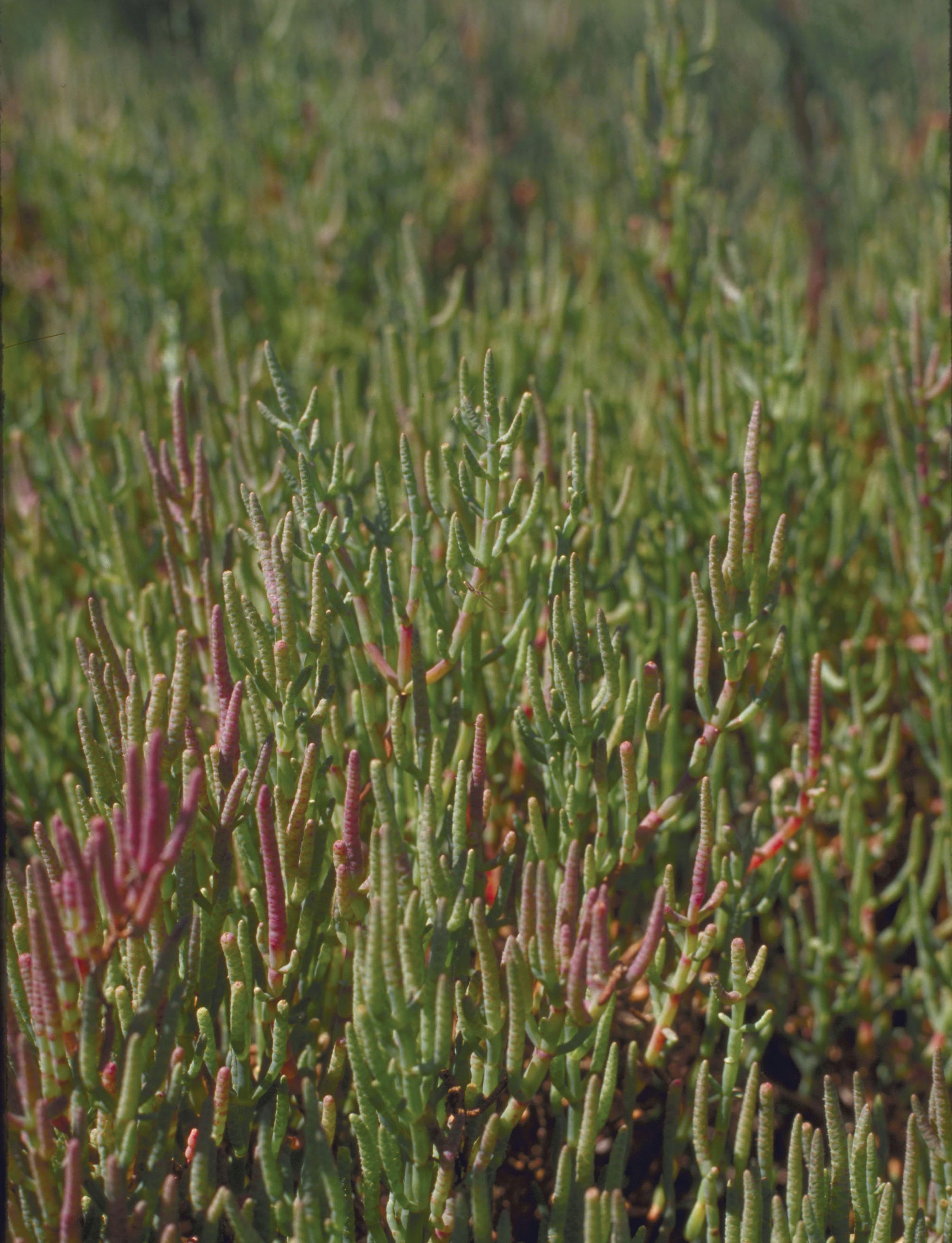
Transportation of the healthy Pajaro River Valley soils will happen from August through October 2013, with large dump trucks
This summer, the Reserve has begun making significant improvements to the levee at Whistlestop Lagoon, an area where tidal influence has been controlled by artificial structures. The levee, which doubles as the trail to Hummingbird Island, has degraded over the years, requiring frequent maintenance to fill holes and fix unsafe trail conditions.
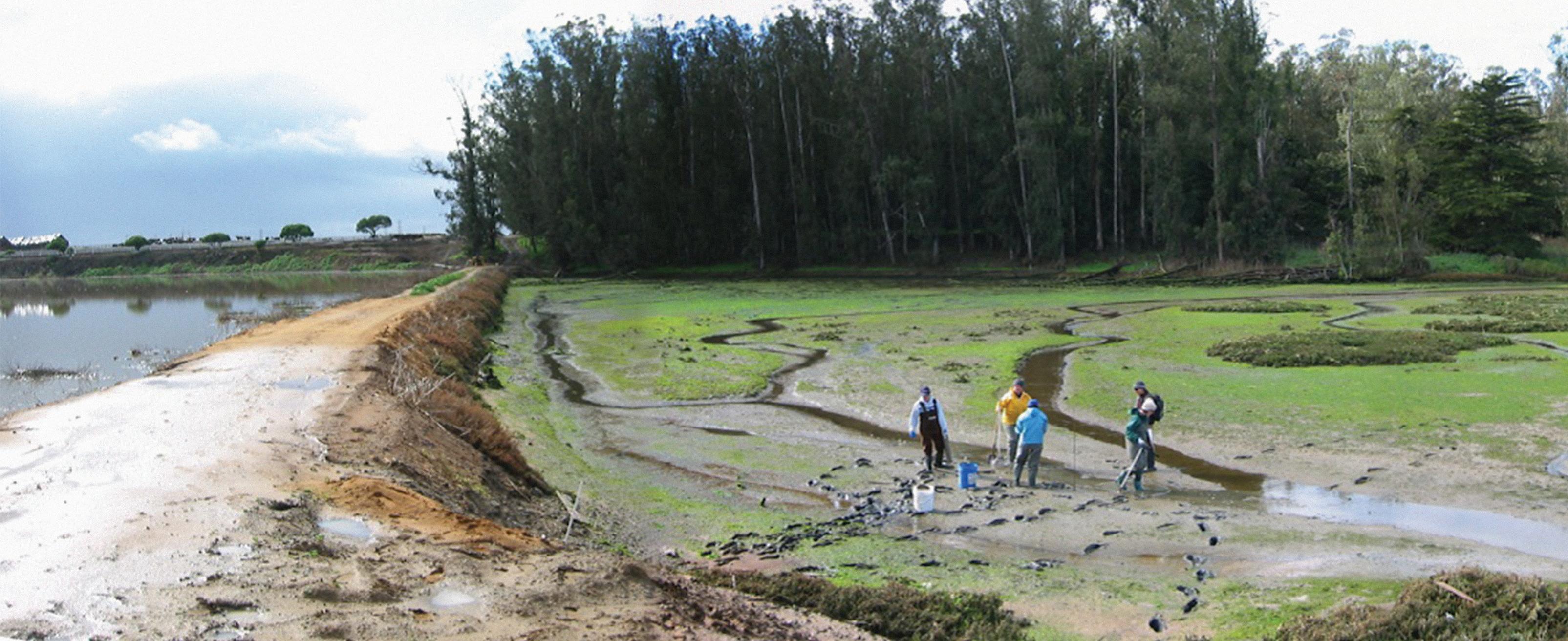
delivering approximately 86,000 cubic yards of soil to the marsh edge—making sections four feet high covering approximately 13 acres. To prevent erosion, these sections will be stabilized with straw wattles and planted with a cover crop.
When all the required permits are finalized, the sediment will be moved onto the intertidal flats, raising the marsh plain to be colonized by salt marsh plants and wildlife. To restore healthy tidal marsh that will not be drowned by tidal flooding, enough sediment will be added to raise the marsh to about six feet above mean sea level (just above mean high tide). Because the land was used as pasture and not plowed, we will be able to retain the historic marsh channels.
The Tidal Marsh Restoration Project is an exciting blend of cutting-edge science, regional collaboration,

community-based support, and good old-fashioned hard work. This landmark effort will take years to complete, yet we believe it will stand as a model for tidal marsh restoration projects throughout California and around the world.
We’ll keep you posted as work progresses! n

The enhancement project will repair the levee and remove collapsed culverts—pipes that carry water through the levee. The repaired levee, featuring a larger opening that doubles as a bridge, will help restore natural tidal dynamics, improve water quality, and increase access for aquatic wildlife. The work will also improve the trail and provide safer access to Hummingbird Island.
The project will take a few months to complete, during which the trail to Hummingbird Island may be closed temporarily. Thank you for bearing with a short-term inconvenience that will allow us to make long-term improvements to habitat and access at Whistlestop Lagoon.
While work is underway, there are still many trails open to explore on the Reserve—we hope to see you here! n
Photo by Brian Largay

ESF established the “Elkhorn Slough Foundation Conservation Education Scholarship for The Les Strnad Award” in 2012 to honor the contributions of Les Strnad to science education and wetland conservation in Monterey County. Each year we present the award to young people from underserved communities, granting them full scholarships to Camp SEA Lab’s week-long “Elkhorn Slough and You!” day camp.
This year, ESF awarded scholarships to seven local youth, allowing them to attend Camp SEA Lab and explore Elkhorn Slough this summer. This will be their first experience at the slough.
Not so long ago, ESF Member Phil Krotz worked as a teacher of special needs and at-risk youth. He found this career challenging yet tremendously rewarding.
After he retired from teaching, Phil decided to follow other passions: photography and the Elkhorn Slough.
“We saw a shark’s fin,” exclaimed an enthusiastic young camper. Another jumped in to add, “And we found an owl’s feather in the barn!”
The students explored Elkhorn Slough on foot and by kayak, learning about the estuary, its watershed, and the incredible diversity of plants and wildlife that depends on the slough. They identified native plants and wildlife, investigated the microscopic world of plankton, encountered seals and sea otters, and helped restore precious wetlands.
Congratulations to all the scholarship winners! n

For the past 14 years, he has visited the slough on a regular basis, composing images that capture the tiny details of life in the watershed. His photo of a frog emerging from duckweed in a Reserve water guzzler, for example, won a spot in the 2012 ESF calendar.
“I really enjoy photographing small animals and insects,” says Phil. “It’s not so much about micro- or macro-photography as about capturing little vignettes at a smaller scale.”
Phil shows his work in local galleries, and cards with his photos can be purchased at the Reserve bookstore.
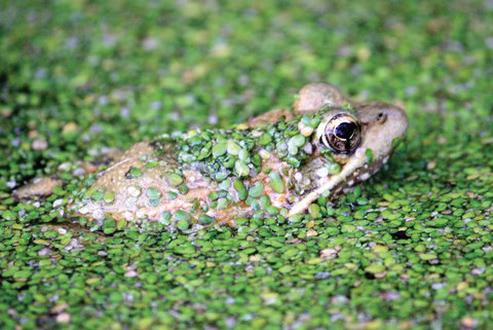
“You’d think if you come here just about every day, like I do, it might start to feel a bit routine,” says Phil. “But there’s always a something exciting to see. It’s familiar, but it’s always changing.”
“And,” he adds, “if I want to see something different, I just walk a different direction.” n

Steven Webster, Elkhorn Slough Foundation President
For nearly 30 years, the Elkhorn Slough Foundation has been dedicated to the stewardship and restoration of lands surrounding the slough. We received our first property through a donation from the Sandholdt family in 1986. After years of managing this and another 1,000 acres of land, the strategic decision to become a land trust was made in 1997. Today the Foundation is the single largest landowner in the Elkhorn Slough watershed caring for nearly 4,000 acres of important ecosystems.
From the start, we have set our land management standards high. Our restoration projects are guided by research and conducted through phased management to ensure work that is best for the land, water, and animals that depend on this habitat.
Last year the Board of Directors made the decision that the Foundation should seek accreditation from the Land Trust Accreditation Commission, an independent program of the Land Trust Alliance (the national organization representing land trusts). Obtaining accreditation will certify that the Elkhorn Slough Foundation is abiding by the highest standards and practices by an non-profit organization for the conservation of land. To receive this designation, ESF is undergoing a detailed review of policies and programs by the Commission.
As part of the review process the Accreditation Commission invites public input and accepts signed, written comments on pending applications. Comments must relate to how Elkhorn Slough Foundation complies with national quality standards. These standards address the ethical and technical operation of a land trust (for the full list of standards see www.landtrustaccreditation.org/tips-and-tools/indicatorpractices). Comments may be mailed, faxed, or emailed to:
Land Trust Accreditation Commission, Attn: Public Comments 112 Spring Street, Suite 204, Saratoga Springs, NY 12866 (fax) 518-587-3183 • info@landtrustaccreditation.org
Comments on Elkhorn Slough Foundation’s application will be most useful by October 27, 2013.
To learn more about the accreditation program or to submit a comment online, visit www.landtrustaccreditation.org.
The Board of Directors appreciates your membership and support of the accreditation process. Thank you for your commitment to the conservation and restoration of Elkhorn Slough. n
In 2006, the Land Trust Alliance established an independent program—the Land Trust Accreditation Commission (LTAC) —to recognize land conservation organizations that meet national quality standards for protecting important natural places and working lands forever.
The LTAC seal of accreditation distinguishes land trusts that demonstrate standards and practices that ensure excellence, trust, and permanence in land protection. These standards and practices (which can be viewed at www.landtrustaccreditation. org/tips-and-tools/indicator-practices) include items such as ethical operations, responsible governance, and accountability to donors and the public.
Accredited land trusts submit to a regular process of external audit and internal review to assure sound governance, responsible fiscal policies, and adherence to the highest ethical, legal and technical standards. Accredited land trusts are fully accountable and committed to transparency in their fundraising and land protection efforts. And, they are dedicated to conserving land permanently, for those here now and for future generations.
The Elkhorn Slough Foundation is committed to honoring the trust given to us to protect the watershed. We are undergoing the accreditation process so that you, our supporters, are assured that we adhering to the highest standards and practices for land trusts. n
Elkhorn Slough Foundation
P.O. Box 267
Moss Landing, CA 95039
The Elkhorn Slough Reserve is open Wednesday through Sunday, 9am to 5pm. Join us for docent-led tours every Sunday morning and afternoon.
SAVE THE DATE: Join us for our upcoming events. For more information, call 83�.728.5939 or visit www.elkhornslough.org.
• TBA: Acorns to Oaks—Propagation Workshop
• September 7: Volunteer Appreciation Dinner
• September �2–�5: Monterey Bay Birding Festival
• September 22: Celebration for Sea Otter Awareness Week
• October 5: Native Plant Fair
• November 9: Fall Bird Migration Walk
• December �: Mark’s Mud Meander (Stewardship Circle Event)


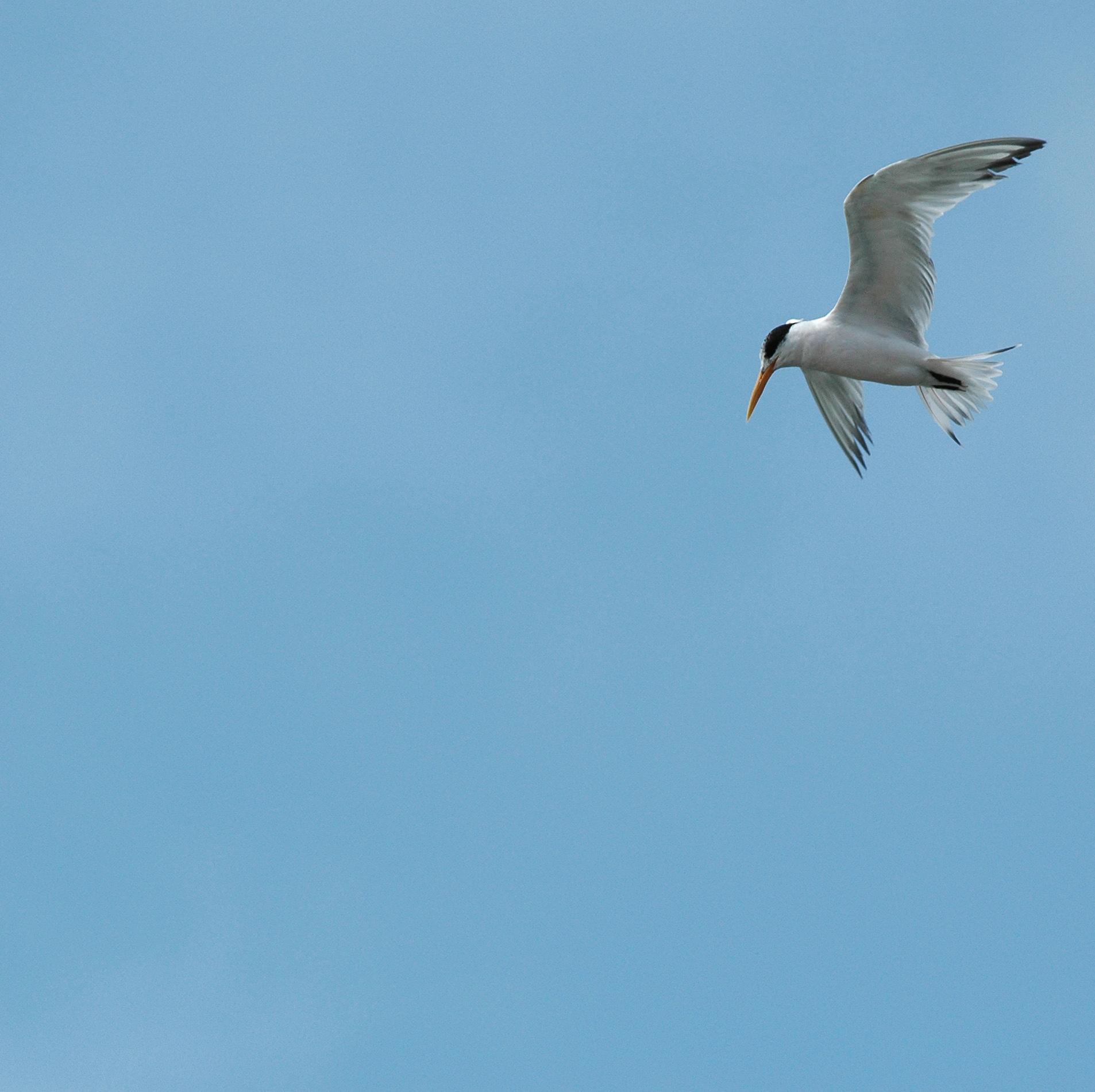
While you’re out enjoying the Elkhorn Slough Reserve don’t forget your camera. When you capture that amazing shot of a bird, shadows in the oaks, or shark in the water, you could be a winner!
The contest will close on Sept 30, 2013, so start shooting now. For more details or to enter, visit www.elkhornslough.org.
